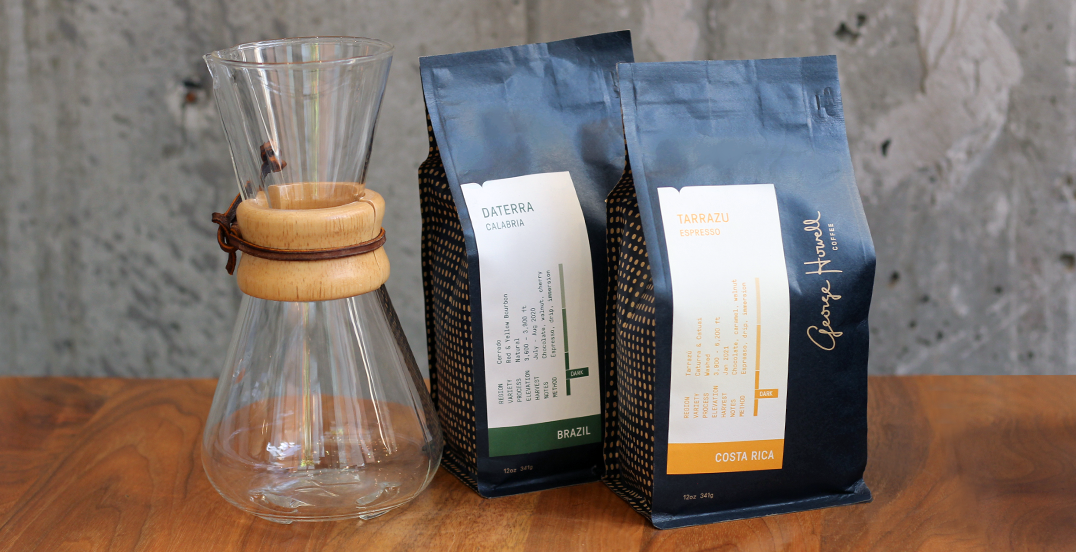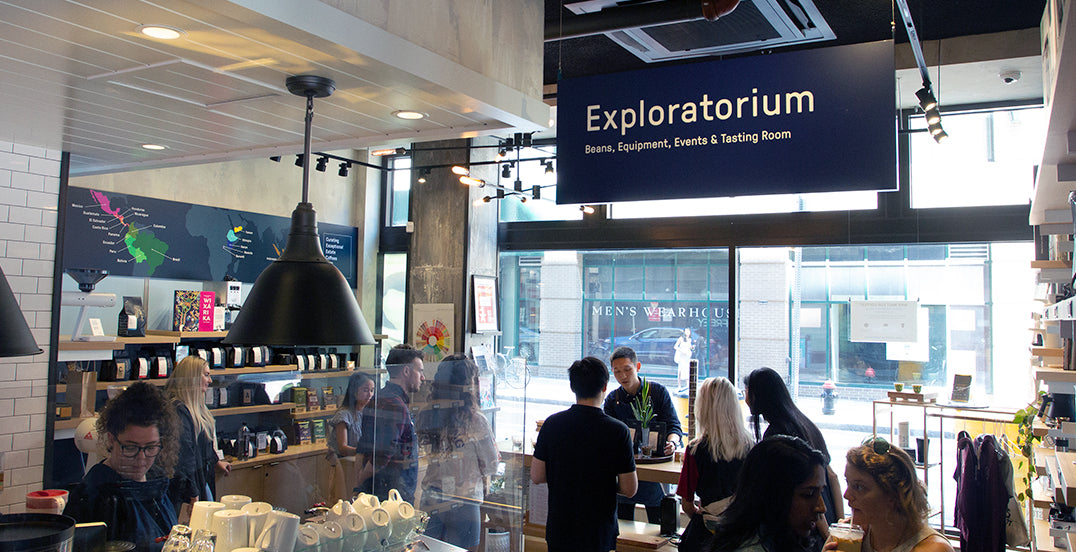Quality
Terroir (tair-wahr) is a French word denoting influence of place on the overall taste experience of an agricultural product. Used exclusively for wine until recently, the term terroir is nowadays applied to many products such as tea, chocolate, cheese, honey, olive oil and especially coffee. A product is said to have terroir when a unique coalescence of environmental factors gives it a positive character that cannot be reproduced elsewhere. Soil, climate, altitude, topography, exposure to sun, the local micro-organisms, available water and anything else in a plant’s environment are all involved. Without the right location a coffee will be limited to ordinary.
The term terroir was refined and given deeper meaning in the nineteenth century, as fine wine came to be appreciated by a widening, richer and ever more sophisticated consumer base. It was first primarily focused on soil. This was, after all, what gave primary sustenance to the plant via its roots, the soil’s special contents fueling unique nuances in the plant’s expression. Already in the Middle Ages Cistercian monks had realized that the grapes from certain tiny plots of land in Burgundy repeatedly produced discernable differences in wine from adjacent, apparently identical plots, something that could only be attributed to differences that lay beneath the vines. Specialty coffee is a long way from that kind of laser-like focus on soil which the Cistercian monks of Burgundy exercised in their communal vineyards, but it seems appropriate to begin exploring where a farmer should plant coffee by briefly examining soil first, where the tree seeks nutritional sustenance.

Soil
Soil affects productivity and bean quality. Its level of organic matter, minerals, trace elements, micro-organisms and acidity are powerful contributors to a coffee tree’s vigor and to the flavor profile potential of its beans. A soil’s texture, however, is the most important factor for growing sustainable quality coffee, for while a soil’s contents can be “corrected” with inputs such as fertilizers and lime, its texture is far less malleable. Ideal soils should be loamy – crumbly, permeable, having high oxygen content, and be deep, especially in drier areas.
A coffee plant can withstand long dry seasons lasting up to six months if the soil has retained some moisture. In very dry areas, such as Kirinyaga, Kenya, the soils must be especially deep to retain moisture during prolonged droughts; a coffee tree’s roots can burrow at least ten feet (three meters) down. Too much continuous moisture around the root system will, on the other hand, harm the plant. Certain famous farms of the Antigua valley in Guatemala require carved channels to allow for drainage in what was once a marsh.
A further discussion of soils will be made in our section on coffee tree nutrition.

Climate & Topography
All coffee grows in the tropics, within the Tropic of Cancer and the Tropic of Capricorn. Moderate rainfall is ideal, distributed in just the right way: there should be a dry season immediately during and after the harvest, followed by “blossom showers” which soak the earth just enough to initiate simultaneous flowering of all the coffee plants; during this time the showers politely stay away so as not to mess with the setting of the fruits. Once set, the rains conveniently arrive in the afternoon, after a glorious morning, and depart in time for a spectacular sunset every day for the next seven to eight months! Some years certain places, like the Pacific-facing mountains of Costa Rica, El Salvador and Guatemala, can be like that!
Many coffee growing areas do not meet this “perfection”. Colombia and Kenya are directly on the equator, where rainfall is more evenly distributed over the entire year. This leads to multiple flowerings and two major harvests each year.
The great Kenya coffees grow in arid conditions while other famous growing areas such as Coban, Guatemala and Boquete, Panama have rains even during the harvest. Indeed, apparent handicaps may often also be responsible for special overall environments conducive to creating unique flavor profiles, or terroirs, once obstacles are understood and accommodated.
Cloud cover, position of the sun, temperature range, rainfall and its pattern of distribution, soil composition and structure, accessibility – all play a critical role in the production and cost of quality. Higher altitudes can produce more ideal temperatures, below 90 F (32 C) and above 45 F (7 C) year round, with high diurnal contrast, ideal for growing complex, floral, bright yet balanced coffees – but often very expensive to develop or maintain due to such things as the steep slopes’ poor accessibility and proneness to erosion and powerful winds.
Places like the Cerrado of Brazil provide still a different environment: here the land is at 3,000 to 3,500 feet, can be very flat, and is ideal for mass production, including mechanical harvesting. Lack of rainfall is not necessarily a problem, where water can be brought from rivers near the Amazon to the north.Extreme dryness allows farmers to provoke an even flowering, and therefore an even-ripening harvest, with controlled water applications.Excess heat and poor drainage, on the other hand, can lead to severe quality problems and lack of complexity in the cup.Such coffees, when grown with great care requiring full labor, do best as espresso, a brewing method which applies very high pressure to the coffee grounds and squeezes out every drop of acidity, thus establishing good balance between liveliness and the heavy body produced by such environments. While these areas can produce high quality within a certain flavor spectrum by far the majority of production is dedicated to extreme productivity at minimal cost, particularly labor. This mass production is slowly improving in quality, as technology becomes more efficient and precise, and now challenges the vast majority of coffee growers living on mountain slopes who compete on price in a coffee world that still has very little price-quality segmentation, compared to wine and tea.

Altitude
Fine coffees grow at about 3,500 feet (1,000 m.) in altitude to over 6,000 feet (1,800 m.). Some rare exceptions exist: Hawaiian Kona is so far north of the equator that coffee cannot be grown higher than 2,000 feet; it is simply too cold.
Altitude has a powerful effect on a coffee’s flavor profile. Flat plains can subject coffee plants to greater heat, less ventilation and less diurnal temperature contrast. Coffee beans and their surrounding fruit tend to ripen more quickly and develop smooth, duller, sometimes earthier, flavor tones than coffees grown at higher elevations. Very high altitude environments are subject to greater, rainier cloud cover interspersed with very intense periods of sun and high diurnal temperature contrast within an ideal range of 50˚ F to 85˚ F. In mountain valleys such as Antigua, Guatemala, temperatures can plummet at night.

Coffee quality is often graded in part by altitude. As an example, there are eight classifications according to elevation in Guatemala starting atGood Washed,at 2,300 feet, to the highest,Strictly Hard Bean (SHB)at over 5,250 feet. Beans growing at lower levels tend to be softer and less dense; in storage, they lose their flavor more quickly than harder higher grown coffees. As a general rule, traditionally, the higher the elevation the better is the potential premium paid to the farmer. Higher elevation coffees exhibit greater floral and bright fruit flavors, with greater liveliness. High altitude usually also means more difficult access and maintenance of roads, greater difficulty planting, maintenance of plants and harvesting as well as less yield per tree.
The highest grown coffees are not necessarily always superior to those grown at moderately high altitudes. It also depends on latitude, the most famous example being Kona, Hawaii which is very far from the equator and where 2,000 feet elevation is the highest one can grow coffee, barely. Most Kona coffee grows far below. Many very fine and delicate Brazils are also far from the Equator. Bill McAlpin of La Minita in Costa Rica chooses very carefully hand selected beans from a moderate to very high altitude to give his coffee extra body and smoothness. Also, while the finest Ethiopian Yirgacheffes are grown in the vicinity of 6,000 feet and have extraordinary floral aromatics they do not have the intense acidity of the great blackberry-laden, high altitude Kenyas, Ethiopia’s neighbor to the south. This may be due to soil differences and/or the radically different varieties of Arabica coffee grown in these two countries.





